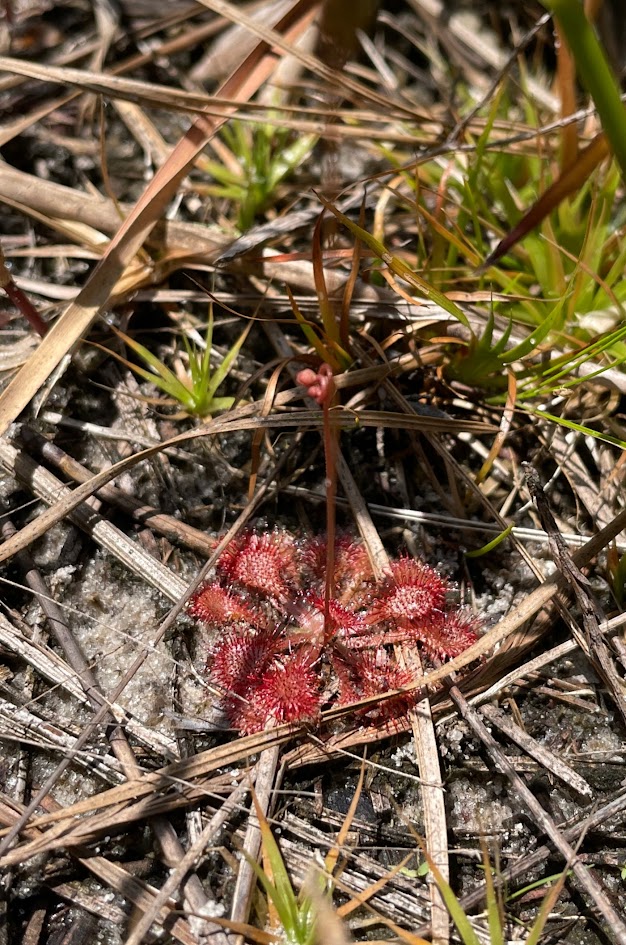
In a perfect world, I would take every student I meet to experience a wild carnivorous bog for themselves. Still, it is possible to bring a small piece of this native habitat into the classroom. As you read through these next few blog posts you will see why and learn step-by-step how to create one with your students!
The first time I visited a carnivorous wetland, I was on a field trip with a group of naturalists. They promised me that we would see pitcher plants and sundews. I was excited, but I had no clue what to expect. As we pulled up to a power line right-of-way in the middle of a pine forest, I was really beginning to doubt the entire outing!
As we hiked, we noticed a few tiny, nickel-sized pink sundews (Drosera capillaris) at the base of the grasses. I was amazed to see small gnats stuck to their sticky leaves, soon to be digested. We crested a small sandy berm where towering overhead were native pond cypress trees (Taxodium ascendens) with myrtle-leaved hollies (Ilex myrtifolia) in the understory. But what really captured my attention was the field of yellow pitcher plants (Sarracenia flava) before me!

Between the clumps of yellow pitcher plants, we noticed diminutive sundews, foxtail clubmosses (Lycopodiella alopecuroides), and sphagnum moss (Sphagnum carolinianum). In the slightly drier areas, hooded pitcher plants (Sarracenia minor) grew in smaller clumps. Their lids almost entirely cover the opening of the pitcher. A colleague pointed out the interesting thin patches along the back and the top of it. These patches allow sunlight to shine through so the insects are attracted to the back and are then more likely to fall into the pitcher.
This habitat is often referred to as a Carolina Bay, which is an appropriate name because this assemblage of plants occurs only in the boggy coastal bays of the Carolinas. The plants that thrive in this habitat require direct sunlight, which historically has been maintained by fire, either from lightning or indigenous groups. Unique native wildflowers bloom throughout this extraordinary landscape , including Rosebud Orchid, or Spreading Pogonia, (Cleistesiopsis divaricata) and Tuberous Grass Pink Orchids (Calopogon tuberosus), two native orchid species. Other native flowers we spotted included Bay blue-flag iris (Iris tridentata), White-topped sedge (Dichromena latifolia), lance-leaved milkweed (Asclepias lanceolata), and orange milkwort (Polygala lutea). On later visits, I was also able to see the carnivorous plants bloom, too.
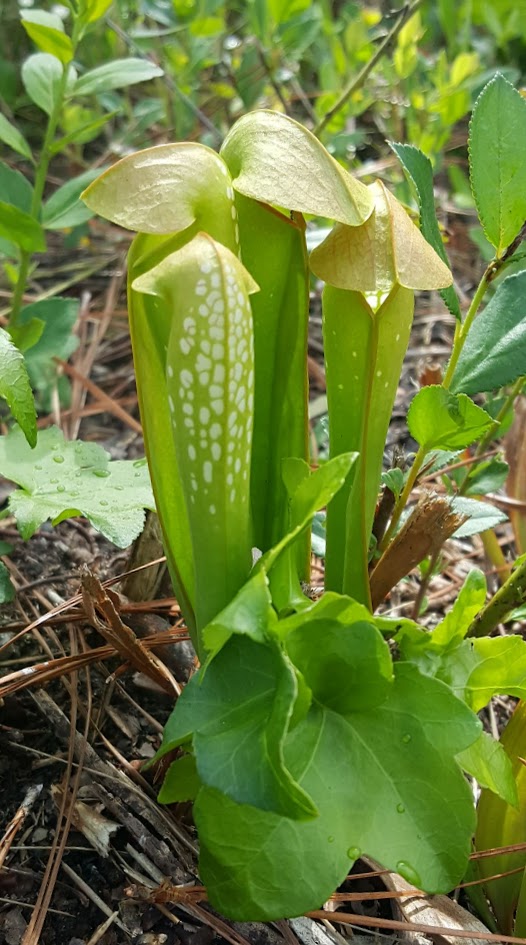

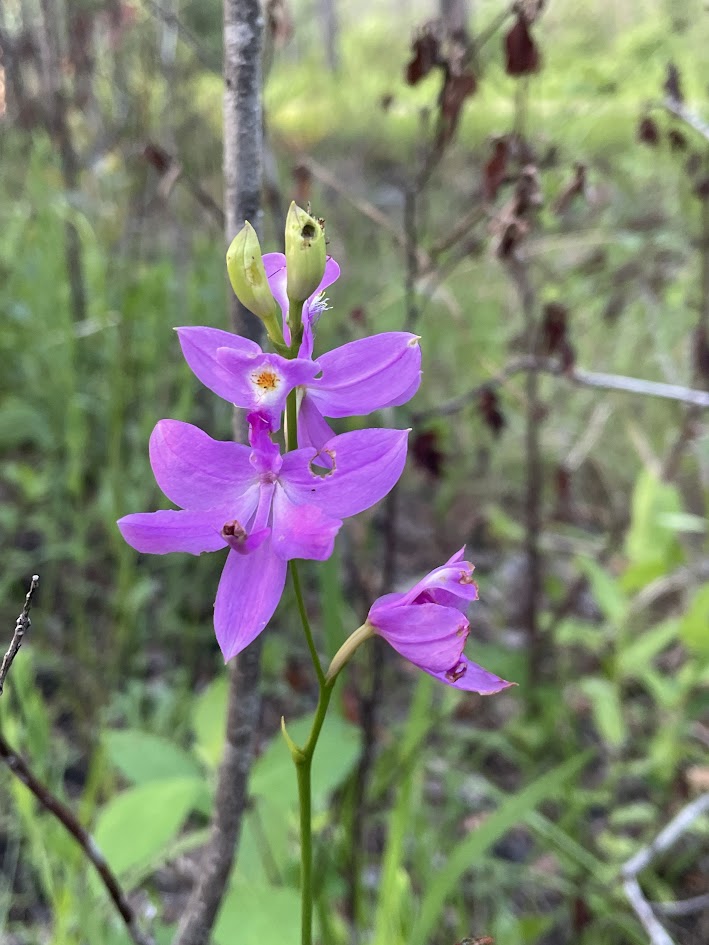
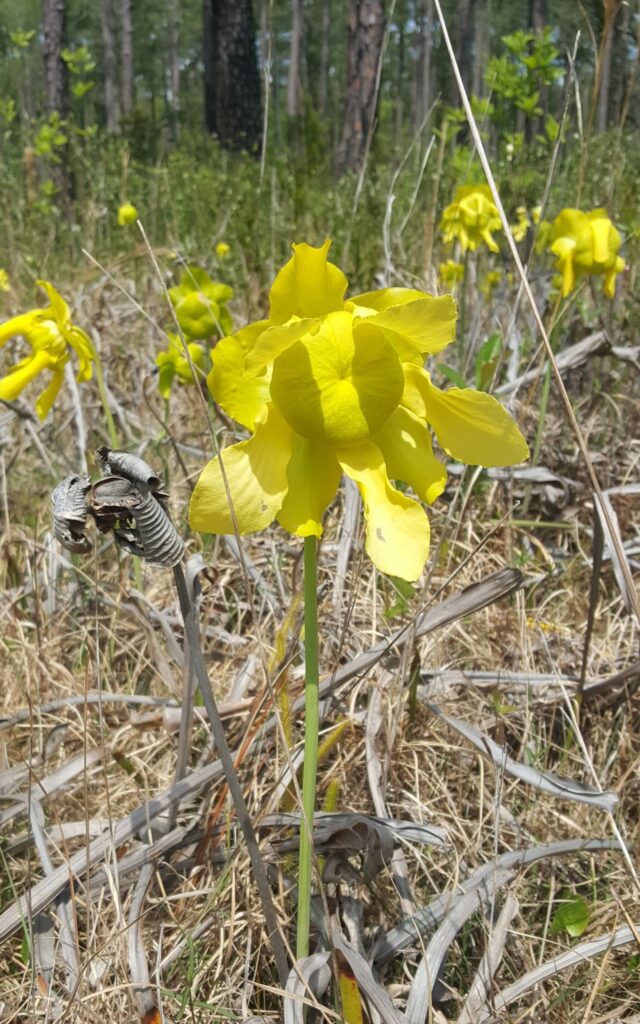
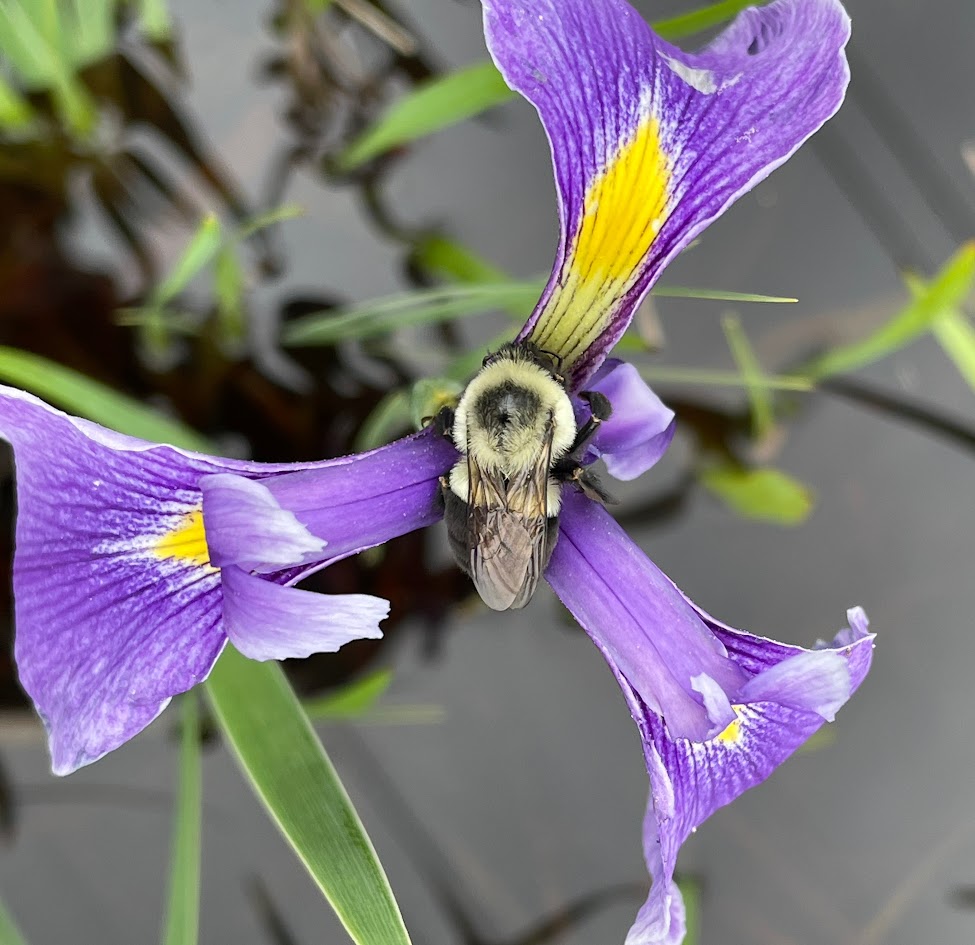
The entire field was buzzing with pollinating insects flying in every direction. With a little investigation, we found some of the unlucky insects at the bottom of a pitcher plant. Pulling apart an old, dormant pitcher plant can reveal the exoskeletons of partially digested invertebrates. Since then, I have observed parts of beetles, ants, bees, spiders, and wasps filling the bottom half of pitcher plants. Pitcher plants trap invertebrates passively. They don’t have a trap or sticky parts. Instead, they attract invertebrates with nectar produced at the top of the pitcher’s throat. Once inside, the small hairs inside their pitchers prevent their prey from escaping. In addition, the yellow pitcher plant produces a paralyzing toxin, coniine, in its nectar. The prey then settles at the bottom, where digestive enzymes break down their soft tissues, and specialized cells then absorb the nutrients. It’s fascinating how they have evolved to thrive in such a harsh environment.
In my next installment of this series, I’ll show you how to build a living carnivorous bog using an aquarium that will thrive indoors. I’ll share step by step instructions and a video to construct a 20-gallon carnivorous bog for your classroom or science lab. Stay tuned!
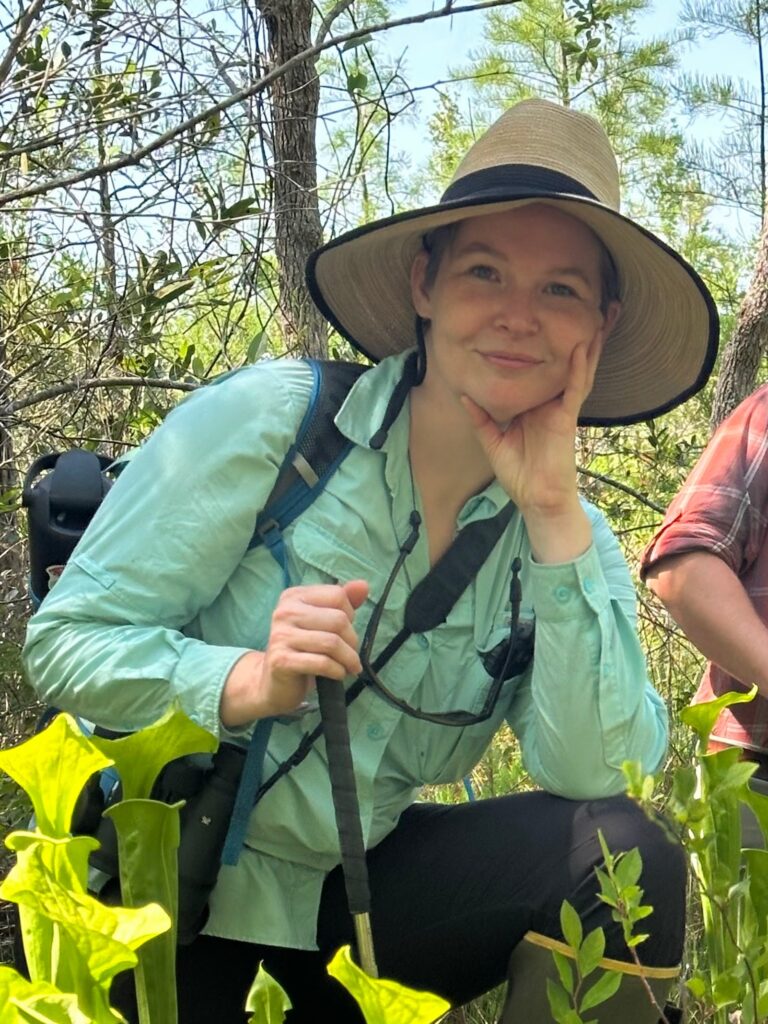
Written by Tess Moody, Natural Resources Extension Associate, Clemson Extension
All photos by Tess Moody © 2025.
